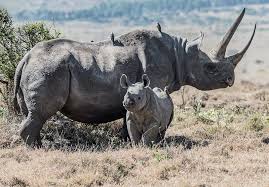A wave of grief and outrage has swept through Zimbabwe’s conservation community after the brutal killing of a 22-year-old black rhino named Gomo at Imire Conservancy in Marondera. The majestic animal was gunned down by poachers, driven by greed and the demand for rhino horns.
Reilly Travers, a conservationist at Imire Rhino and Wildlife Conservation, expressed deep anguish over the loss. “Imire’s soul has just been ripped from within. We have just had one of our beloved rhinos shot today. He was brutally massacred by poachers for greed,” Travers said, mourning the death of Gomo, who had become a symbol of conservation efforts in the area.
Gomo’s killing has reignited calls for urgent action to protect Zimbabwe’s dwindling population of endangered wildlife. Black rhinos are listed as critically endangered, and conservationists fear that Gomo’s death could embolden poaching syndicates unless decisive interventions are made.
Travers urged the public to stand together and fight for the protection of wildlife. “We are going to stand together and fight for what is right because if we don’t, we won’t have these species on this planet. Every day, we are losing this battle, so my plea to you, let us stand together, unite, educate, inspire to protect what we have remaining,” he said.
Opposition politician Fadzayi Mahere demanded a full police investigation into the killing, questioning the government’s commitment to protecting endangered species. “Hopefully, those responsible for this egregious, criminal act will be held accountable by police. Where is the Minister of Environment? What steps will be taken to investigate? Does the government even care or is it complicit?” Mahere asked.
Wildlife conservationist Ignatious Kudakwashe Maeresa echoed the sentiments, noting that the country had suffered a dual blow, both ecological and economic. “As a country, we have not only lost just in terms of monetary value only, but we have also lost in terms of ecological value as well. Rhinos are also identified as keystone species, which means they bring a lot of value to an environment where they will be inhabiting,” Maeresa said.
The tragedy unfolds amid rising concerns about other threats to rhino habitats, including a controversial coal mining proposal in Sinamatella, a region within Hwange National Park home to some of Zimbabwe’s remaining black rhinos. As the nation mourns Gomo, the call to protect Zimbabwe’s wildlife grows louder, with conservationists warning that unless serious measures are taken, these iconic giants may soon disappear forever.
end//..












